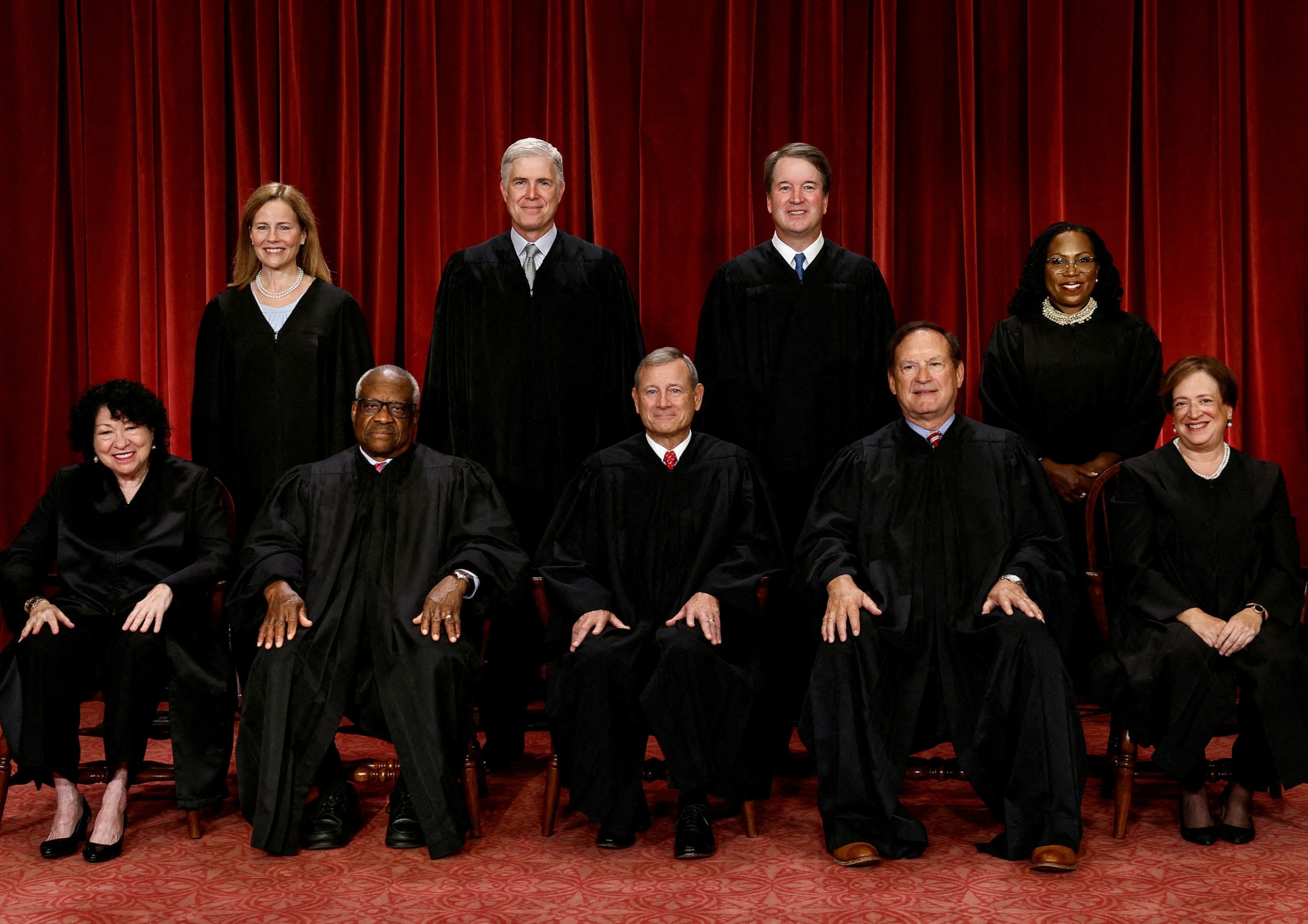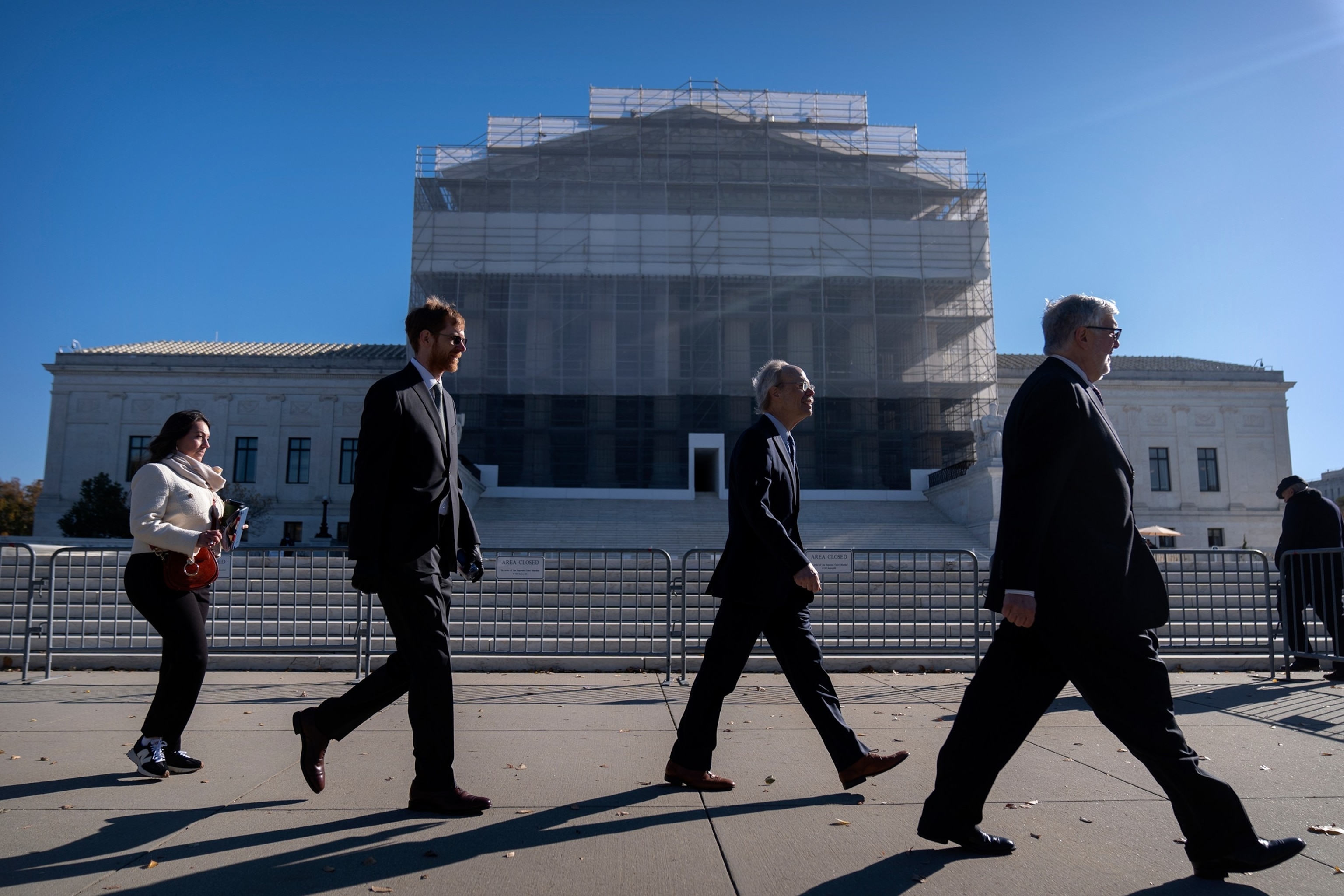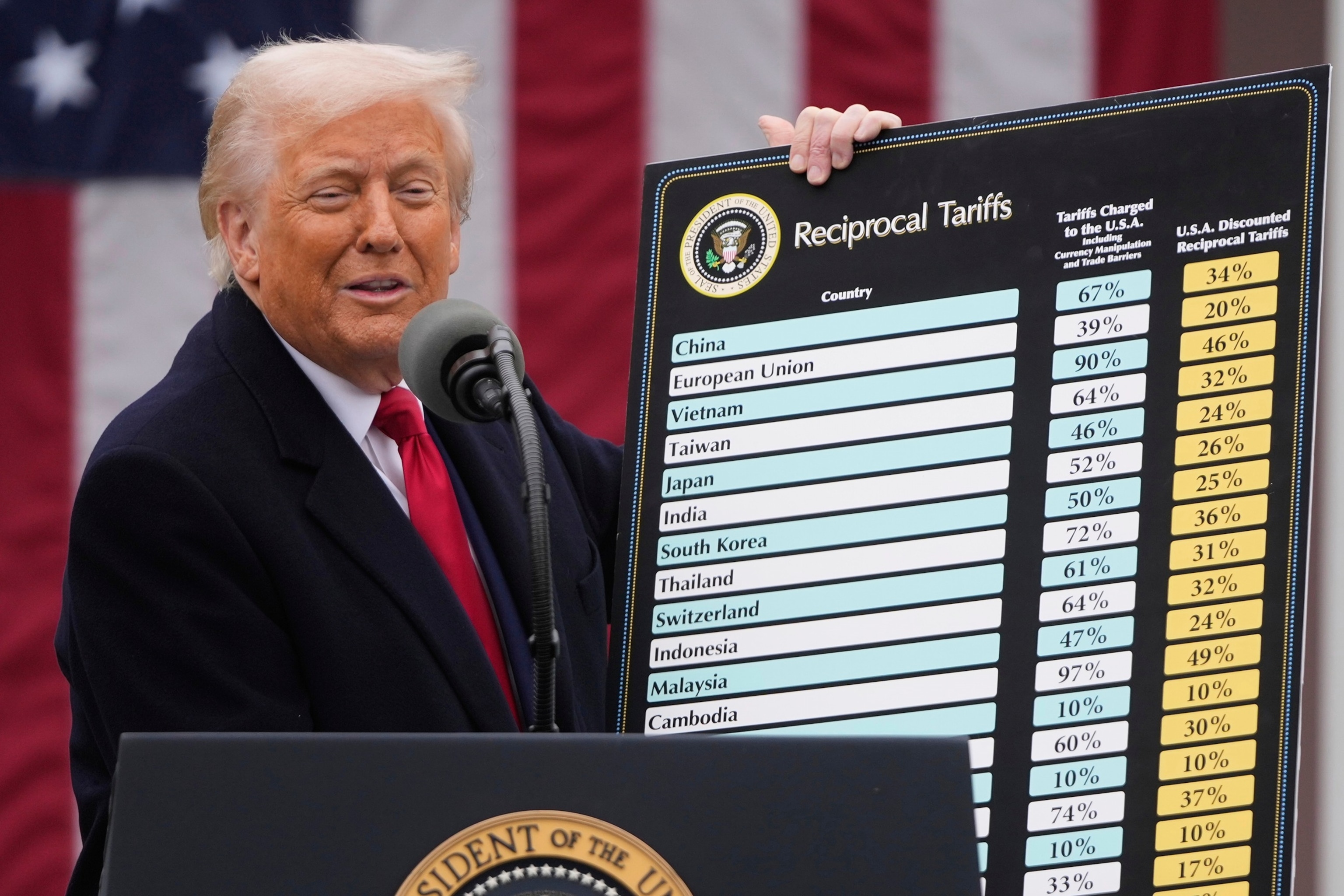The Supreme Court on Wednesday heard arguments about the legality of President Donald Trump’s global tariff program in a blockbuster case of extraordinary importance to American consumers and businesses, the nation’s financial health, global diplomacy and future presidential power.
President Trump called it “one of the most important cases in the history of our country.”
If the tariffs are invalidated, the US government could owe tens of billions of dollars in refunds to the companies that paid them. Such an outcome could also eliminate a primary bargaining chip that Trump has used in negotiations with other countries.
A decision to maintain the tariffs would cement an expansive new exercise of presidential power and preserve a cornerstone of Trump’s agenda that economists say could boost some American manufacturing in the long run but would cost American families an average of more than $1,700 only this year with higher prices.
Judges seem skeptical of Trump’s tariff authority
The Constitution grants Congress the exclusive authority impose taxes on citizens and tariffs on imports, with some limited exceptions adopted over the years to give the president some discretion in times of national crisis.
The key question in the Trump case is whether the International Emergency Economic Powers Act of 1977 gives the president the unlimited ability to set tariffs on any country, at any level, for as long as necessary, as long as an emergency is declared at the president’s sole discretion.
Trump is the first president to try to use the IEEPA to set tariffs without Congress, and the justices pressed Attorney General John Sauer to justify the broad authority.
Sauer argued that the tariffs are “regulatory” in nature and that any revenue collected is incidental. That’s despite Trump often boasting about the billions of dollars he says the administration has collected as a result of taxes.
“We do not maintain that what is being exercised here is the power to impose taxes, but rather the power to regulate foreign trade. These are regulatory tariffs, not tariffs to raise revenue. The fact that the increase in revenue is only incidental,” Sauer said.

U.S. Supreme Court justices pose for their group portrait at the Supreme Court in Washington on Oct. 7, 2022.
Evelyn Hockstein/Reuters, Files
sauer then faced a barrage of questions from justices, including several conservatives, who seemed skeptical about Trump’s tariff authority under the IEEPA.
“The vehicle is the taxation of Americans. That has always been the central power of Congress,” Chief Justice John Roberts, considered a key vote in the case, said at one point.
Roberts later summarized the plaintiffs’ argument against the tariffs by suggesting that the tariffs “went into the pockets of the American people” as a tax.
“It seems to me – tell me if I’m wrong – that the really key part of the context here, if not the determining one for you, is the constitutional assignment of taxing power to Congress,” Roberts said. “The power to reach the pockets of the American people is just different.”
Sauer responded: “They are clearly regulatory tariffs, not taxes.”
In another notable exchange, Justice Neil Gorsuch expressed concern that the Trump administration is taking away too much authority from Congress under its interpretation of the law. At one point, he suggested that the Trump administration’s vision contributes to a “one-way ratchet toward the gradual but continued accumulation of power in the executive branch and away from the people’s elected representatives” in Congress.
“I’m fighting and waiting…what’s the reason for accepting the notion that Congress can shift the power to declare war to the president?” —he asked Sauer.
Gorsuch then flipped the script, asking whether a future administration could use the same authority to impose tariffs in a climate change emergency.
“It’s very likely that it can be done… This administration would say it’s a hoax. It’s not a real crisis,” Sauer responded.
“I’m sure you would,” Gorsuch joked.
Justice Samuel Alito expressed some support for the Trump administration’s argument, recognizing the president’s broad authority during emergencies.
“Wouldn’t you agree that laws giving the president real emergency powers are often written much more broadly than other laws? Isn’t that the very nature of an emergency?” Alito asked Neal Katyal, who defended the challengers.
“I know you guys question the fact that this is a real emergency,” Alito added.

People arrive to attend oral arguments before the Supreme Court, Nov. 5, 2025, in Washington.
Mark Schiefelbein/AP
But looking ahead, Judge Barrett asked Katyal what would happen if the court sided with the president and ruled that the tariffs were illegal.
“If you win, tell me how the refund process would work. Would it be a complete disaster?” she asked.
Katyal responded by noting that there is an administrative process to obtain a refund, although the process could take some time.
“There has to be an administrative protest. There was… a previous case that this court was involved in,” he said. “The refund process took a long time for any number of claims.”
“So, a disaster,” Barrett said.
The court has never examined the meaning of IEEPA
Shortly after taking office, Trump issued executive orders declaring an emergency over illegal immigration and drug trafficking from Mexico, Canada and China. In April, he issued another executive order declaring an emergency over “large and persistent trade deficits” with dozens of countries around the world.
Trump subsequently imposed tariffs ranging from 10% to more than 100% on goods imported from each country.
A coalition of small business owners and Democratic-led states sued Trump over the tariffs, arguing that the word “regulate” in the law does not cover tariffs or taxes, which are not explicitly mentioned, and that the “emergencies” Trump declared are neither unusual nor extraordinary as the law requires.
“Congress, not the president, decides whether and to what extent to tax Americans who import goods from abroad,” the states wrote in their legal brief to the court. “This Court should reject the president’s attempt to seize that power.”
The high court had never before examined the meaning of the IEEPA.
“This is an astonishingly important case from an economic perspective and from a separation of powers perspective,” said James Sample, a Hofstra Law professor and ABC News legal contributor.
“If the court gives the green light to tariffs, then this is a new world order in terms of the constitutional scheme for taxing, spending and regulating all aspects of the economy,” Sample said.

A Main Street Alliance protester holds a sign outside the U.S. Supreme Court, as its justices are set to hear oral arguments on U.S. President Donald Trump’s attempt to preserve broad tariffs in Washington, Nov. 5, 2025.
Nathan Howard/Reuters
The Court of International Trade, the United States Court of Appeals for the Federal Circuit, and a Federal District Court in Washington, DC, ruled in favor of the tariff plaintiffs.
The International Trade Court also invalidated Trump’s drug trafficking tariffs on Mexico, Canada and China, saying the dangers of illicit drug trafficking do not amount to “an unusual and extraordinary threat.”
The courts allowed the tariffs to remain in place until the Supreme Court reaches a final decision.

A drone view shows a cargo ship sailing in Hong Kong, China, on Oct. 17, 2025.
Tyrone Siu/Reuters
Tariffs have become a major source of revenue for the federal government, estimated to raise $2.8 trillion over the next decade. according the Committee for a Responsible Federal Budget.
The financial impact has hit many American small businesses especially hard.
Learning Resources Inc., a children’s toy maker based near Chicago, Illinois, and one of the plaintiffs in the case, said the tariffs have wiped out profits and crippled hiring.
“We pay $2.3 million in tariffs in 2024,” said CEO Rick Woldenberg. “Under our 2025 budget, we would have paid $100 million in tariffs at Trump’s 145% rate on China. It’s receded a bit from there, but it’s still a very disruptive expense that we can’t bear on our own.”
Cassie Abel, CEO of Idaho-based women’s technical apparel company Wild Rye, said the tariffs have threatened to force her out of business.
“The supply chain for what we produce doesn’t exist here in the United States,” Abel said of his Chinese-made ski and cycling gear. “Textiles have not been a priority of this administration, and it would take significant investments from our country to bring textiles on any scale back to the US.”
Aabesh De, founder and CEO of Flora, a Tennessee company that produces smart plant monitors in China, said tariffs have “crippled” plans for new products and innovation.
“It’s a man-made existential crisis like we haven’t seen since Covid, and it’s frustrating,” De said.
Regardless of how the court rules, some of Trump’s tariffs and tariff authority will remain intact, albeit much more restricted by federal law.
More than a third of U.S. imports, including steel, aluminum, automobiles, machinery and medical devices, are subject to import taxes under Section 232 of the Trade Expansion Act of 1962, which allows the president to impose tariffs on specific industries in the interest of national security.
Provisions of the Trade Act of 1974 also allow the president to impose specific tariffs on countries for unfair trade practices and trade deficits, but only after an investigation and only in a limited amount, for a limited period of time.

President Donald Trump speaks during an event to announce new tariffs in the Rose Garden of the White House, April 2, 2025.
Mark Schiefelbein/AP, FILE
The Supreme Court’s conservative majority has been highly deferential to executive authority, particularly in matters of foreign policy and national security. But it has also blocked presidential attempts to enact sweeping domestic policies, such as a nationwide moratorium on evictions during the pandemic and a multibillion-dollar student loan forgiveness program, without the express consent of Congress.
“It’s a matter of luck, because within the kind of doctrinal context that conservatives operate in, you see these two things going in different directions,” said Jonathan Adler, a constitutional law expert at William University. & Mary Law School. “If they see it as a case of foreign affairs, the administration wins. If they see it as a case of textual interpretation, they lose.”
The court took up Trump’s tariff case on a very expedited basis, but it is unclear how quickly it will make a decision. A ruling is expected before the end of June 2026.


